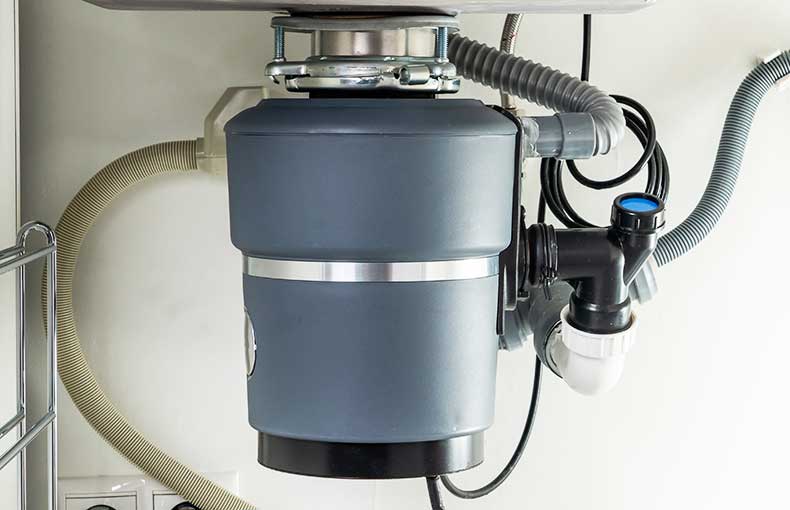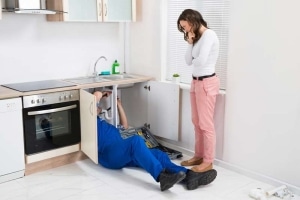Highly-Rated Tips for Fixing a Leaking Waste Disposal Unit
Highly-Rated Tips for Fixing a Leaking Waste Disposal Unit
Blog Article
How do you really feel with regards to Garbage Disposal Leaking From Bottom?

Garbage disposals are vital cooking area appliances that assist in dealing with food waste effectively. Nonetheless, a leaking garbage disposal can be a discouraging and unpleasant trouble to manage. Fortunately, many leaks can be repaired easily with a few basic actions. In this write-up, we will go over how to take care of a leaking waste disposal unit successfully.
Intro
Garbage disposals are installed under kitchen area sinks and are created to shred food waste right into smaller sized pieces, allowing it to travel through the plumbing system quickly. While these devices are usually reputable, leakages can take place over time due to deterioration, loosened links, or damages to the system.
Step-by-Step Overview to Dealing With a Dripping Waste Disposal Unit
Turn Off the Power
Prior to trying any kind of fixings, ensure that the power to the garbage disposal unit is turned off to stop the threat of electrical shock.
Situate the Leakage
Identify the specific area of the leakage and identify the cause
Tighten up Connections
Use a wrench to tighten any kind of loosened connections in between the disposal system and the pipes system.
Replace Seals or Gaskets
If the leakage is because of worn seals or gaskets, eliminate the old elements and replace them with brand-new ones.
Patching Splits or Holes
For splits or holes in the disposal system, use epoxy or an appropriate patching product to secure the broken area.
Determining the Source of the Leak
Before attempting to fix a dripping waste disposal unit, it is vital to determine the source of the leak. This can commonly be done through visual evaluation or by conducting basic examinations.
Visual Evaluation
Inspect the waste disposal unit system thoroughly for any type of indicators of water leakage. Pay very close attention to locations around seals, gaskets, and link factors.
Examining for Leakages
One method to examine for leaks is by running water through the disposal device and checking for any kind of visible signs of leak.
Typical Reasons For Leaks in Rubbish Disposals
Worn Seals and Gaskets
Seals and gaskets play a vital role in avoiding water from leaking out of the garbage disposal. Gradually, these parts can deteriorate, causing leaks around the disposal system.
Loose Links
The connections between the waste disposal unit and the plumbing system can end up being loosened in time, creating water to leakage out during procedure.
Cracks or Holes in the Disposal System
Physical damages to the garbage disposal, such as cracks or holes in the real estate, can additionally cause leaks.
Tools and Materials Needed for Fixing a Leaking Garbage Disposal
Before starting the fixing procedure, gather the required tools and materials, consisting of a screwdriver, flexible wrench, plumbing technician's putty, replacement seals or gaskets, and epoxy or patching material for fixing fractures or openings.
Checking the Garbage Disposal After Repair
As soon as the repair service is complete, examine the garbage disposal by running water via it to make sure that the leak has actually been resolved.
Preventive Maintenance Tips to Stay Clear Of Future Leaks
To avoid future leaks, it is necessary to execute normal maintenance on your waste disposal unit. This consists of keeping it clean, avoiding putting non-food items or difficult items down the disposal, and periodically looking for leaks or various other issues.
Verdict
In conclusion, taking care of a dripping garbage disposal is a fairly uncomplicated procedure that can be completed with basic tools and materials. By complying with the actions laid out in this article and practicing preventive maintenance, you can keep your garbage disposal in good working condition and avoid costly repairs in the future.
What to Do About a Leaking Garbage Disposal
A leaking garbage disposal often goes unnoticed until you confront a sopping cabinet, a foul-smelling puddle, or an audible drip-drip-drip from the unit. The fix can be frustrating, too, because the leak can stem from a number of components in the system. Fortunately, with a little sleuthing, you can zero in on the leak and—depending on the exact location—stop the icky oozing and repair the component that caused it. Worst case scenario, if it turns out that the garbage disposal must be replaced, installing a new one is a reasonable do-it-yourself task for those with basic plumbing skills. Read on to keep the cash you’d otherwise hand over to a pro.
Prepare to find the leak
Prior to testing the garbage disposal for leaks, unplug it at the wall outlet and turn off the power from the breaker box to prevent electrical shock. Then insert a watertight sink stopper into your sink drain and wipe the unit dry with a clean cloth. In any handy container, mix a few drops of food coloring into a few cups of water, and pour the dyed water onto the sink stopper to help you locate the leak.
Investigate the source
the top, where the disposal meets the sink drain the side, where the dishwasher hose or main drain pipe connects to the disposal or the bottom of the unit Inspect each of these locations while gliding a light-colored rag over the unit; the dyed water will readily show on the rag and reveal the location of the leak. If a leak isn’t immediately apparent, remove the sink stopper and pour a few more cups of dyed water down the sink drain, then check for leaks again. Leaks near the top of the unit are more likely to show themselves while the sink is plugged, while side and bottom leaks are more noticeable while the sink is unplugged.
The metal sink flange that sits directly inside the sink drain is typically sealed around the top with plumber’s putty (a clay-like sealant) and then secured from under the sink with bolts. If the plumber’s putty deteriorates, or the bolts loosen, the flange can no longer form a watertight seal between the sink drain and the disposal—which could cause a leak at the top of the unit.
To reseal the leaky flange, you must first detach the garbage disposal. Start by loosening the screws securing the main drain pipe to the disposal, then loosen the screws in the metal clamp securing the dishwasher hose to the disposal and detach the drain pipe and dishwasher hose from the disposal. Loosen the screws in the mounting ring that connects the disposal to the metal mounting assembly beneath the sink, then pull down the disposal and carefully set it on a clean, dry surface. Loosen the bolts in the mounting assembly with a wrench, then pull down the mounting assembly and set it near the disposal.

I was brought to that editorial on How to fix a pretty consistent leak from my garbage disposal from an acquaintance on another web property. Make sure you set aside a second to share this entry if you enjoyed reading it. Thank-you for your time invested reading it.
Book Now! Report this page